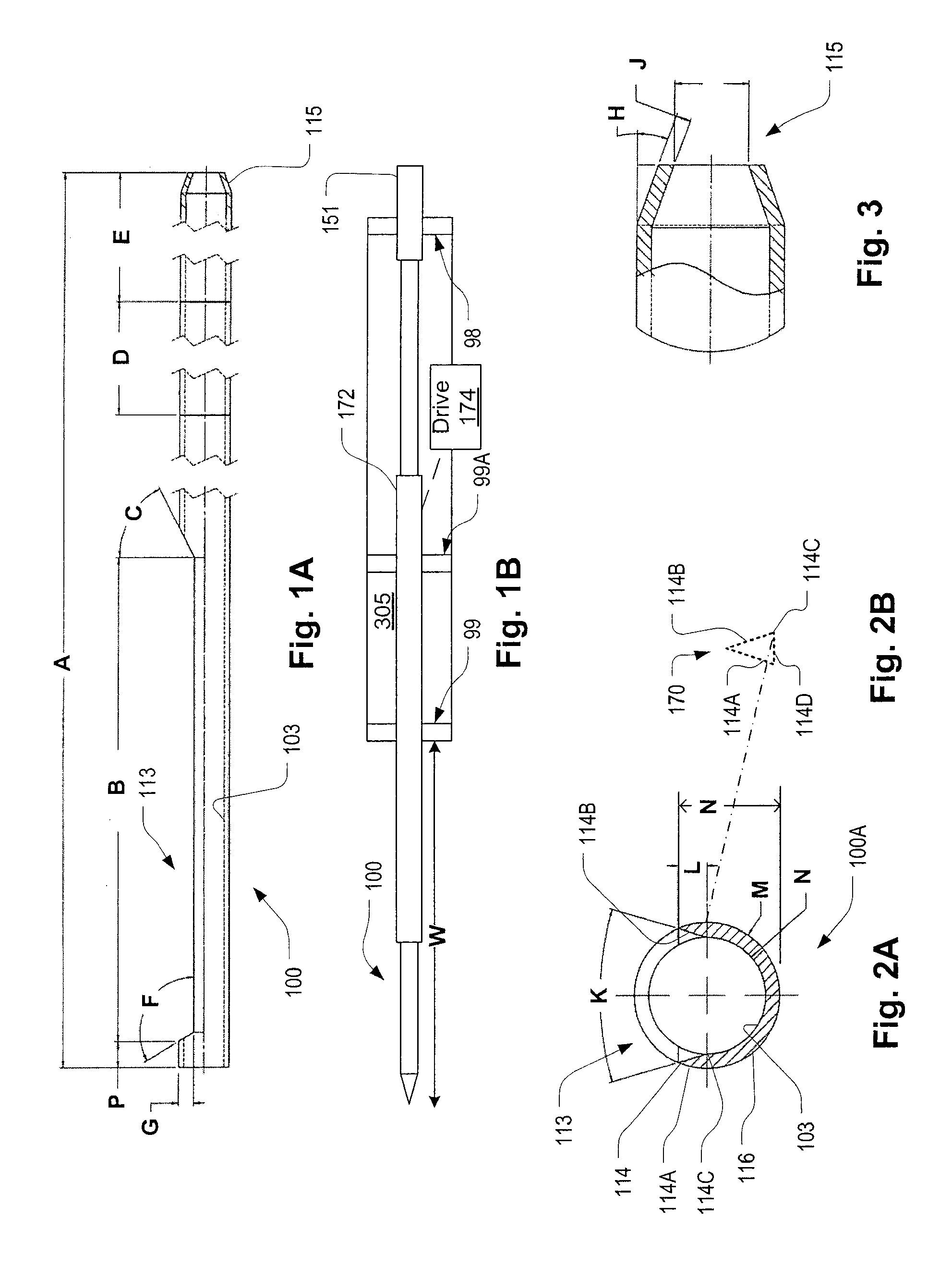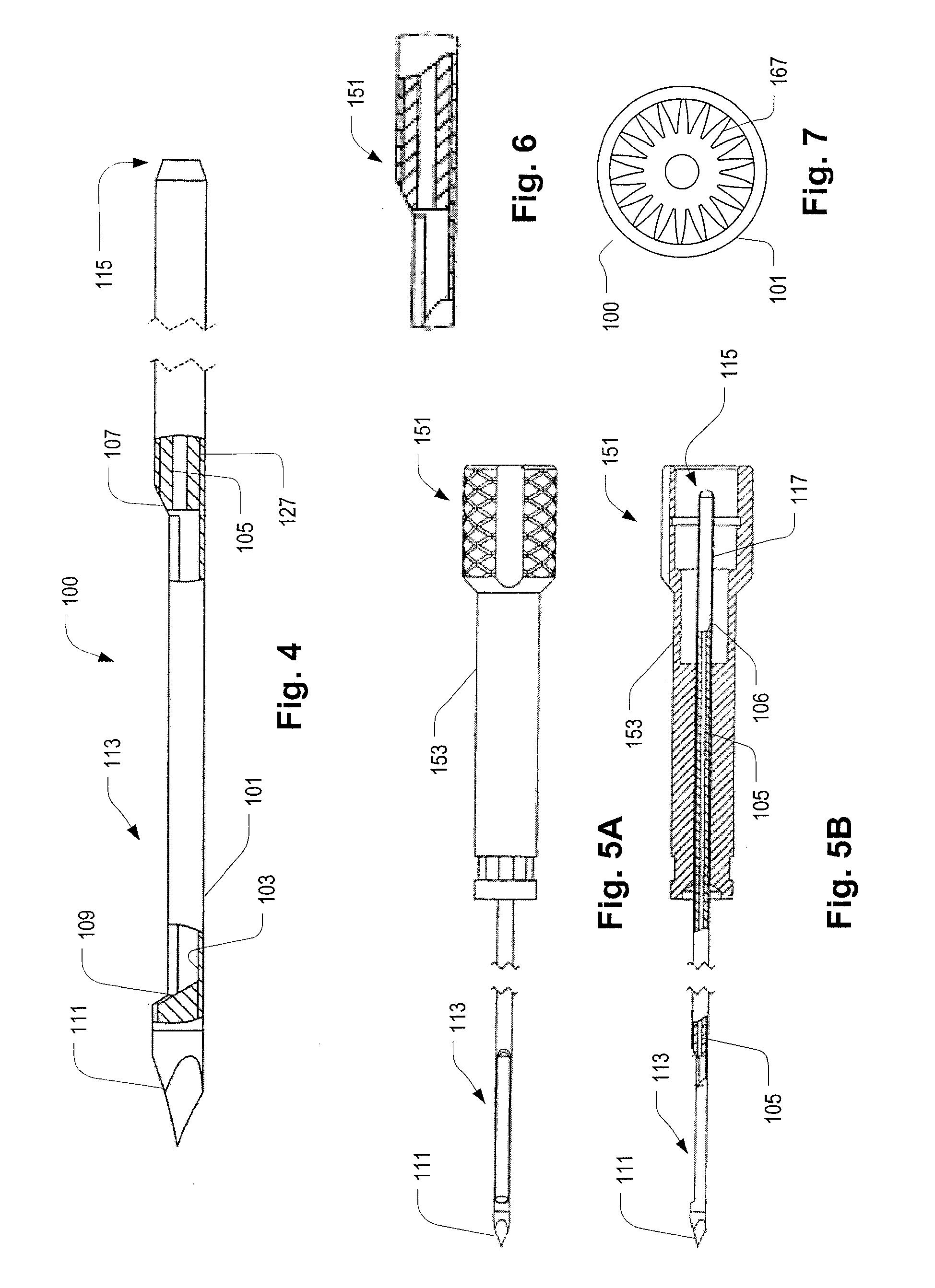Large sample low aspect ratio biopsy needle
- Summary
- Abstract
- Description
- Claims
- Application Information
AI Technical Summary
Benefits of technology
Problems solved by technology
Method used
Image
Examples
Embodiment Construction
[0057]Various driving mechanisms for biopsy needles are known and many are suitable for use with the invention disclosed below. A preferred type of drive mechanism is a self-contained unit disclosed in U.S. patent Ser. No. 10 / 500,522, published as U.S. 2005 / 0203439 (referred to in the background section) filed in the US on Apr. 6, 2005 and U.S. patent Ser. No. 10 / 500,518, filed in the US on Mar. 1, 2005, both of which are hereby incorporated by reference as if fully set forth herein.
[0058]Referring to FIGS. 1 to 7, a biopsy needle stylet 100 has a sample chamber opening 113 with sloping edges 107 and 109 and sides defined by an internal surface 103 of the stylet 100. The biopsy needle stylet 100 has a fully circular cross-section over most of its length except along the sample chamber opening 113 whose interior surface is indicated at 103. Along the sample chamber opening 113, the stylet 100 has an approximately semicircular cross-section as shown at 100A.
[0059]The edges of the samp...
PUM
 Login to View More
Login to View More Abstract
Description
Claims
Application Information
 Login to View More
Login to View More - R&D
- Intellectual Property
- Life Sciences
- Materials
- Tech Scout
- Unparalleled Data Quality
- Higher Quality Content
- 60% Fewer Hallucinations
Browse by: Latest US Patents, China's latest patents, Technical Efficacy Thesaurus, Application Domain, Technology Topic, Popular Technical Reports.
© 2025 PatSnap. All rights reserved.Legal|Privacy policy|Modern Slavery Act Transparency Statement|Sitemap|About US| Contact US: help@patsnap.com



